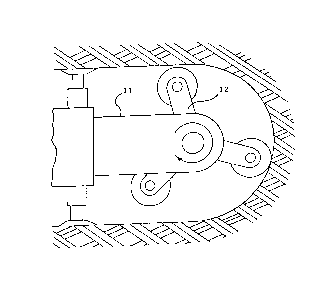Some of the information on this Web page has been provided by external sources. The Government of Canada is not responsible for the accuracy, reliability or currency of the information supplied by external sources. Users wishing to rely upon this information should consult directly with the source of the information. Content provided by external sources is not subject to official languages, privacy and accessibility requirements.
Any discrepancies in the text and image of the Claims and Abstract are due to differing posting times. Text of the Claims and Abstract are posted:
| (12) Patent: | (11) CA 1334842 |
|---|---|
| (21) Application Number: | 1334842 |
| (54) English Title: | SYSTEMS TO DRILL MINERALS ETC... |
| (54) French Title: | SYSTEMES POUR FORCER DES MINERAIS |
| Status: | Expired and beyond the Period of Reversal |
| (51) International Patent Classification (IPC): |
|
|---|---|
| (72) Inventors : |
|
| (73) Owners : |
|
| (71) Applicants : |
|
| (74) Agent: | SMART & BIGGAR LP |
| (74) Associate agent: | |
| (45) Issued: | 1995-03-21 |
| (22) Filed Date: | 1988-03-10 |
| Availability of licence: | N/A |
| Dedicated to the Public: | N/A |
| (25) Language of filing: | English |
| Patent Cooperation Treaty (PCT): | No |
|---|
| (30) Application Priority Data: | None |
|---|
System for drilling minerals, rocks and others of
that kind with the use of rotating disk- or slab-
tools, therewith characterized , that the material to
be drilled will be axcavated - as the case may be
pre-cut / reliefed - chiefly in a frontal advance
direction, but also radially from the inside to the
outside - layerwise undercut and always breaking into
the free space. In combination hereto a process-
patent is demanded for a propulsive aggregate being
autonomic by supporting itself on the pre-worked /
pre-cut excavating front - or rather being lead on it
or through it and keeping this way a constant
undercutting depth.
Note: Claims are shown in the official language in which they were submitted.
Note: Descriptions are shown in the official language in which they were submitted.

2024-08-01:As part of the Next Generation Patents (NGP) transition, the Canadian Patents Database (CPD) now contains a more detailed Event History, which replicates the Event Log of our new back-office solution.
Please note that "Inactive:" events refers to events no longer in use in our new back-office solution.
For a clearer understanding of the status of the application/patent presented on this page, the site Disclaimer , as well as the definitions for Patent , Event History , Maintenance Fee and Payment History should be consulted.
| Description | Date |
|---|---|
| Inactive: IPC from MCD | 2006-03-11 |
| Inactive: IPC from MCD | 2006-03-11 |
| Inactive: IPC from MCD | 2006-03-11 |
| Time Limit for Reversal Expired | 2005-03-21 |
| Letter Sent | 2004-03-22 |
| Inactive: Entity size changed | 2003-04-03 |
| Inactive: Entity size changed | 1999-12-14 |
| Grant by Issuance | 1995-03-21 |
There is no abandonment history.
| Fee Type | Anniversary Year | Due Date | Paid Date |
|---|---|---|---|
| MF (category 1, 3rd anniv.) - standard | 1998-03-23 | 1997-10-24 | |
| MF (category 1, 4th anniv.) - standard | 1999-03-22 | 1998-11-03 | |
| MF (category 1, 5th anniv.) - small | 2000-03-21 | 1999-12-06 | |
| MF (category 1, 6th anniv.) - small | 2001-03-21 | 2000-11-28 | |
| Reversal of deemed expiry | 2001-03-21 | 2000-11-28 | |
| MF (category 1, 7th anniv.) - small | 2002-03-21 | 2001-10-29 | |
| MF (category 1, 8th anniv.) - standard | 2003-03-21 | 2003-03-21 |
Note: Records showing the ownership history in alphabetical order.
| Current Owners on Record |
|---|
| HANNELORE BECHEM |
| Past Owners on Record |
|---|
| DIETER LENZEN |
| KLAUS BECHEM |
| PHILIP BECHEM |
| ULRICH BECHEM |